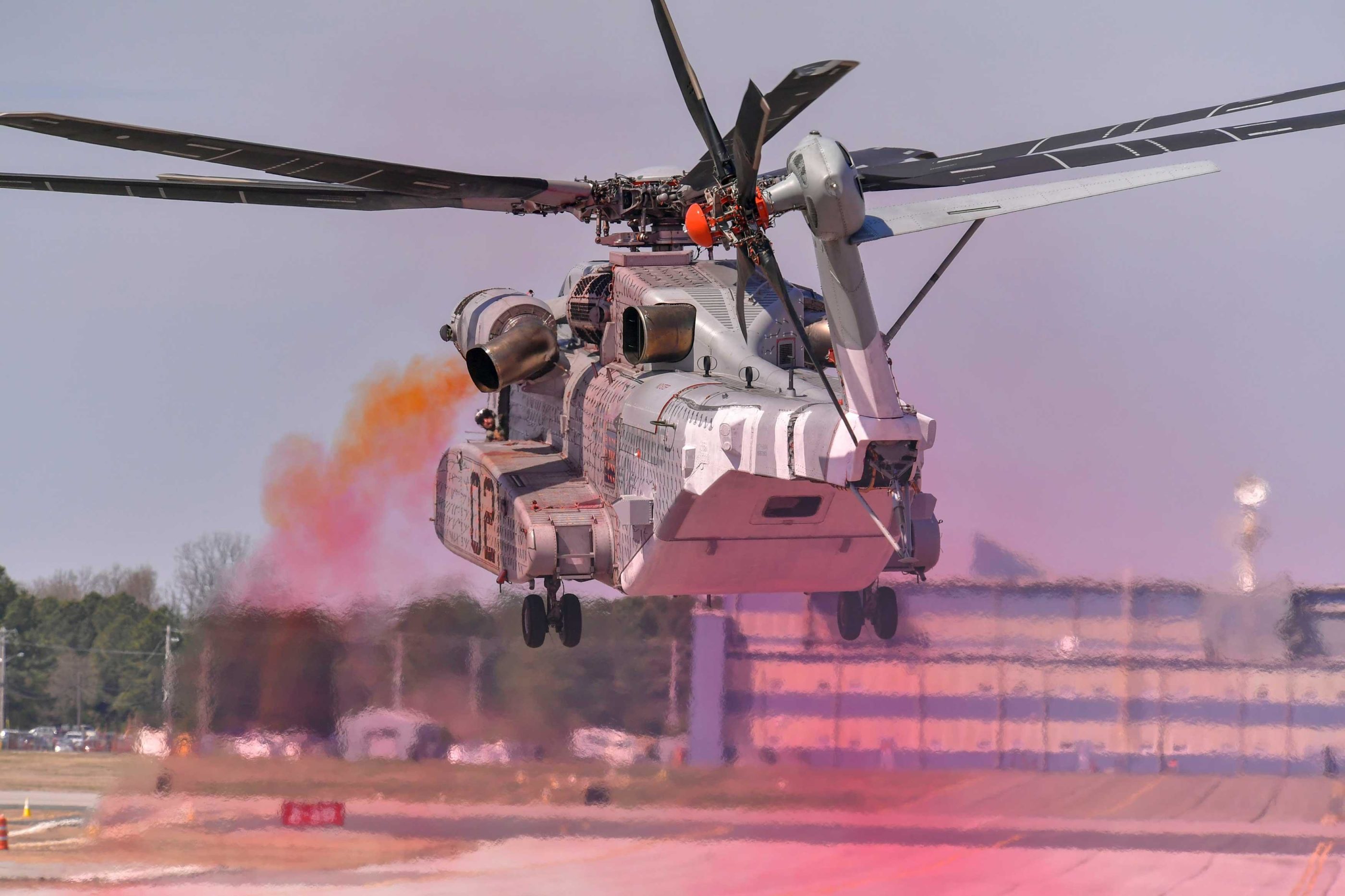Sikorsky has found a solution to the CH-53K engines re-ingesting their own exhaust — an issue that has held up the flight test program and delayed acceptance by the U.S. Marine Corps.

The company and the Marines have put a “tiger team” of expert engineers on the case, according to Naval Air Systems Command (NAVAIR), which oversees the program. Using computational modeling, risk management, flight test data and systems engineering tools, engineers have found a solution to the heavylift helicopter re-ingesting its own exhaust.
“Bringing together the tiger team exemplifies the importance and purpose of an integrated test team,” said Col Jack Perrin, program manager of the Navy’s heavy lift helicopter program office. “It was great to see the team turn the corner for the program and produce a resolution to an ongoing problem. This was a priority for NAVAIR, industry and the Marine Corps, and the team hit it out of the park.”
Sikorsky, Navy and Marine Corps engineers began tackling the problem in April, bringing in experts on computational fluid dynamics, modeling and simulation, materials scientists, structural engineers, logistics and safety professionals, maintainers, test pilots and firefighting officials to perform more than 30 test events.
They collectively evaluated 135 potential design solutions for engine integration that would eliminate the problem of exhaust gas re-ingestion (EGR), according to NAVAIR.
“Our early investment in the CH-53K all-digital design enabled Sikorsky and NAVAIR to quickly and precisely model the exhaust gas re-ingestion situation, analytically predict mitigation approaches, and subsequently build and flight test redesigned components that validated our integrated solution for production,” Steve Schmidt, Sikorsky’s chief engineer for the CH-53K program, said in an email. “Test results show that all issues were successfully addressed.”
Team members worked different root cause analyses in parallel, determining the cause and developing design models to mitigate causes for EGR, Perrin said. From those models, engineers were able to flight test possible solutions and arrived at one that would suit the Marine Corps requirements.
“The extensive set of flight test data was then condensed, analyzed and presented in December 2019 to show that the result performed as predicted and provided an overall design modification that would meet the needs for fleet aircraft,” NAVAIR said in a statement.
The CH-53K is powered by three General Electric T-408 engines, which are more powerful and more fuel efficient than the T-64 engines that run the legacy CH-53E.
Debbie Cleavenger, PMA-216 assistant program manager of engineering and the program office’s chief engineer, said three engines create integration issues, including EGR.
“EGR occurs when the hot engine gasses are ingested back into the system,” explained Cleavenger. “It can cause anything from increased life-cycle costs, poor engine performance and degradation, time-on-wing decreases, engine overheating and even engine stalls.”
Fixing the problems cost the program time because changing one design element cascaded through the entire aircraft, according to Cleavenger.
“The systems constraints were significant,” said Cleavenger. “One change impacted multiple systems.”
Lockheed’s Sikorsky says the issue will not affect the initial operational test and evaluation schedule that should see the first Marine unit equipped with the aircraft in 2023.
“Our customer will determine IOC [initial operating capability],” a company spokesperson said in an email. “Our joint schedule with our NAVAIR customer supports IOT&E and an on-time first U.S. Marine Corps operational deployment in 2023-2024.”










It says “[…] found a solution to the twin-engine heavylift helicopter […]” and then that it has “[…] three General Electric T-408 engines.”
Small mistake in a very interesting article